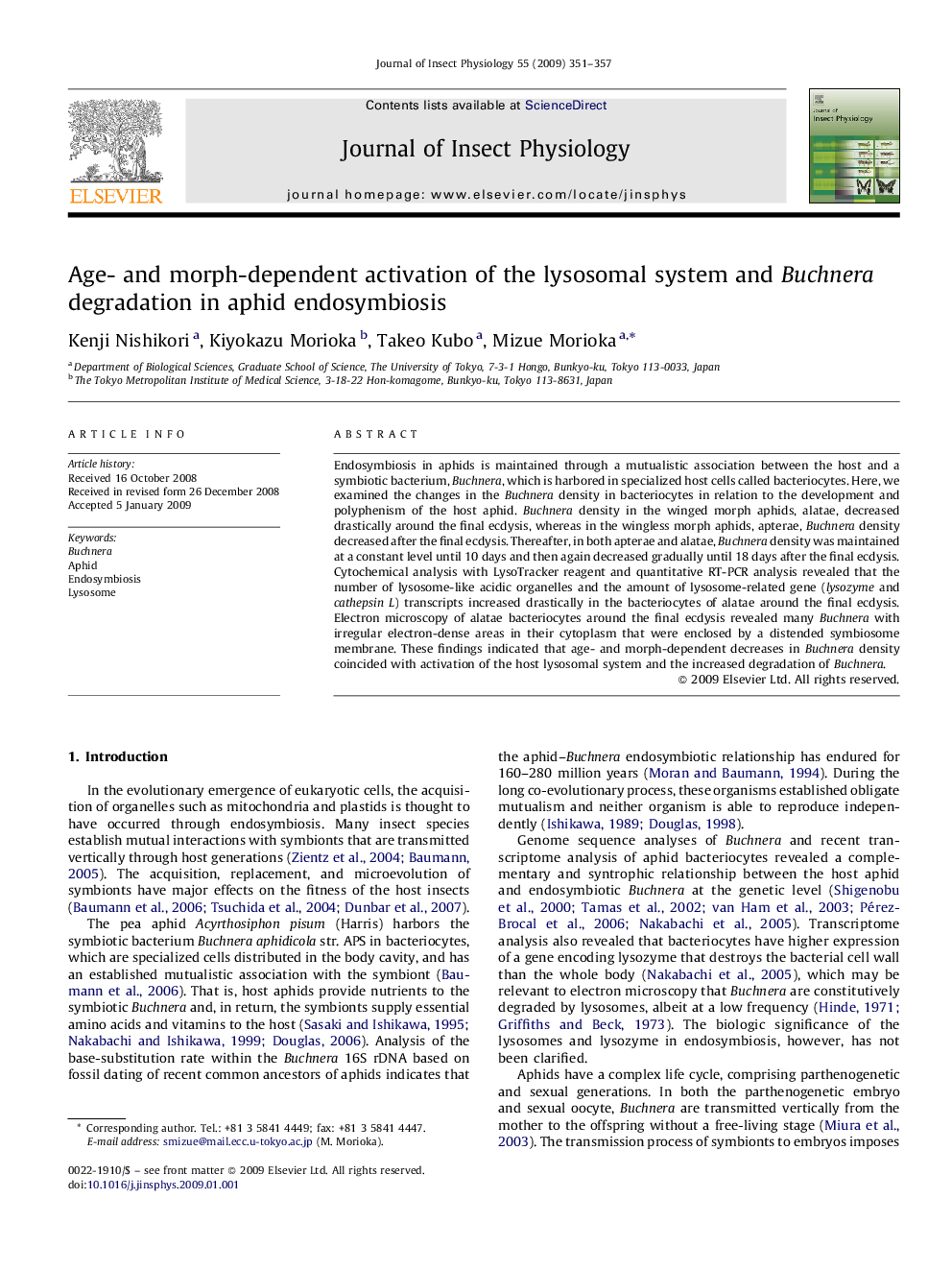| Article ID | Journal | Published Year | Pages | File Type |
|---|---|---|---|---|
| 2841141 | Journal of Insect Physiology | 2009 | 7 Pages |
Endosymbiosis in aphids is maintained through a mutualistic association between the host and a symbiotic bacterium, Buchnera, which is harbored in specialized host cells called bacteriocytes. Here, we examined the changes in the Buchnera density in bacteriocytes in relation to the development and polyphenism of the host aphid. Buchnera density in the winged morph aphids, alatae, decreased drastically around the final ecdysis, whereas in the wingless morph aphids, apterae, Buchnera density decreased after the final ecdysis. Thereafter, in both apterae and alatae, Buchnera density was maintained at a constant level until 10 days and then again decreased gradually until 18 days after the final ecdysis. Cytochemical analysis with LysoTracker reagent and quantitative RT-PCR analysis revealed that the number of lysosome-like acidic organelles and the amount of lysosome-related gene (lysozyme and cathepsin L) transcripts increased drastically in the bacteriocytes of alatae around the final ecdysis. Electron microscopy of alatae bacteriocytes around the final ecdysis revealed many Buchnera with irregular electron-dense areas in their cytoplasm that were enclosed by a distended symbiosome membrane. These findings indicated that age- and morph-dependent decreases in Buchnera density coincided with activation of the host lysosomal system and the increased degradation of Buchnera.
